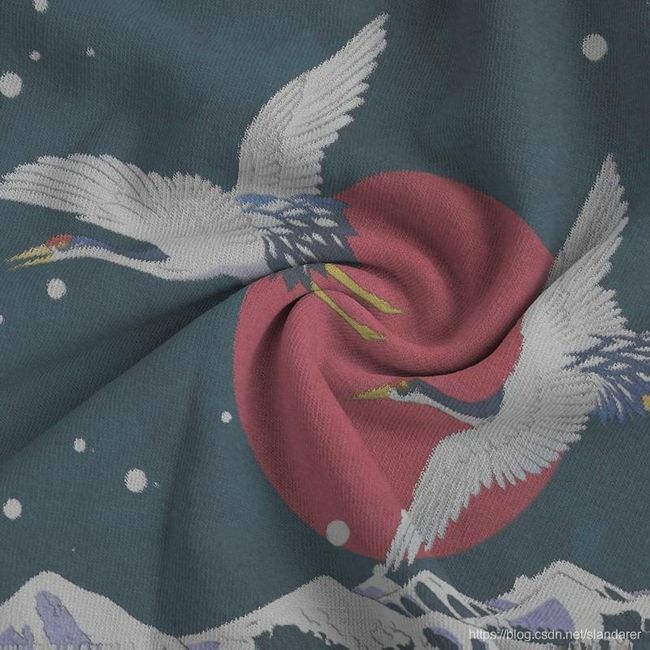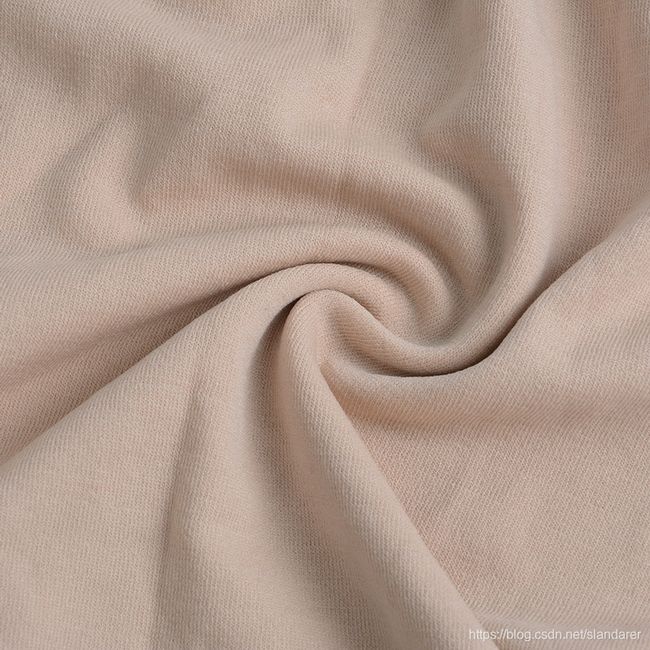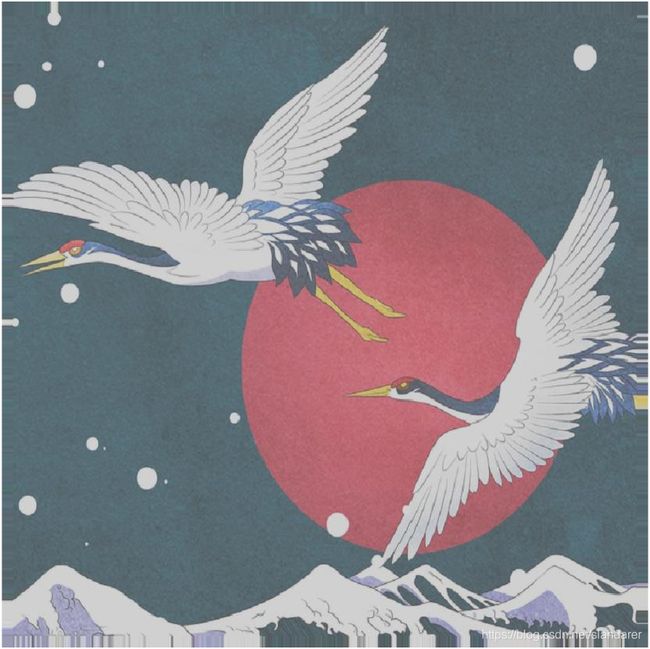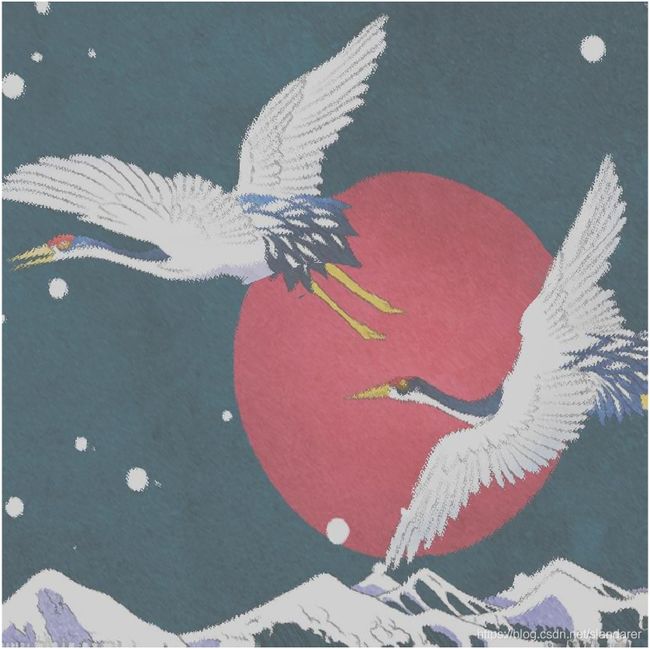MATLAB 制作抖音同款含褶皱面料图
步骤
1.导入图片
我们需要导入一张褶皱图片(background.jpg)以及一张前景图片(foreground.jpg),将褶皱图片灰度化,将前景图调整至与褶皱图片相同大小:
bkgPic=imread('background.jpg');
bkgPic=rgb2gray(bkgPic);
forePic=imread('foreground.jpg');
forePic=imresize(forePic,size(bkgPic));
2.图片扩张
因为我们要对前景图片进行拉伸,难免边角处缺一块,因为我们首先将边缘处颜色往外扩展几圈(13圈)
exforePic=uint8(zeros(size(forePic)+[26,26,0]));
exforePic(14:end-13,14:end-13,1)=forePic(:,:,1);
exforePic(14:end-13,14:end-13,2)=forePic(:,:,2);
exforePic(14:end-13,14:end-13,3)=forePic(:,:,3);
for i=1:13
exforePic(i,14:end-13,:)=forePic(1,:,:);
exforePic(end+1-i,14:end-13,:)=forePic(end,:,:);
exforePic(14:end-13,i,:)=forePic(:,1,:);
exforePic(14:end-13,end+1-i,:)=forePic(:,end,:);
end
for i=1:3
exforePic(1:13,1:13,i)=forePic(1,1,i);
exforePic(end-13:end,end-13:end,i)=forePic(end,end,i);
exforePic(end-13:end,1:13,i)=forePic(end,1,i);
exforePic(1:13,end-13:end,i)=forePic(1,end,i);
end
扩展后图片(图片下侧明显一点):
3.像素映射
原理借鉴ps扭曲置换的原理,亮度较大的像素(大于128)取右下角像素RGB值进行置换,亮度较小的像素(小于128)取左上角像素RGB值进行置换,由于
(255-128)/10=12.7
(0-128)/10=-12.8
各个像素点与替换像素点的距离不超过13,因此上一步共扩展了13圈。
同时因为各个像素分布为整数点位置,而位置差计算一般都不是整数,因此我们要对偏移距离向上向下取整,获得两个像素点RGB值,并对这两点数值进行线性插值即可
newforePic=uint8(zeros(size(forePic)));
for i=1:size(bkgPic,1)
for j=1:size(bkgPic,2)
goffset=(double(bkgPic(i,j))-128)/10;
offsetLim1=floor(goffset)+13;
offsetLim2=ceil(goffset)+13;
sep1=goffset-floor(goffset);
sep2=ceil(goffset)-goffset;
c1=double(exforePic(i+offsetLim1,j+offsetLim1,:));
c2=double(exforePic(i+offsetLim2,j+offsetLim2,:));
if sep1==0
c=double(exforePic(i+offsetLim1,j+offsetLim1,:));
else
c=c2.*sep1+c1.*sep2;
end
newforePic(i,j,:)=c;
end
end
4.正片叠底
将两张图片叠加起来
公式:混合色×基色 / 255=结果色
由于正片叠底后所出图片较暗,这里我们选择除以220而不是255:
newforePic=uint8((double(newforePic).*double(bkgPic))./220);
imwrite(newforePic,'result.jpg')
imshow(newforePic)
5.完整代码
function clothFold
bkgPic=imread('background.jpg');
bkgPic=rgb2gray(bkgPic);
forePic=imread('foreground.jpg');
forePic=imresize(forePic,size(bkgPic));
exforePic=uint8(zeros(size(forePic)+[26,26,0]));
exforePic(14:end-13,14:end-13,1)=forePic(:,:,1);
exforePic(14:end-13,14:end-13,2)=forePic(:,:,2);
exforePic(14:end-13,14:end-13,3)=forePic(:,:,3);
for i=1:13
exforePic(i,14:end-13,:)=forePic(1,:,:);
exforePic(end+1-i,14:end-13,:)=forePic(end,:,:);
exforePic(14:end-13,i,:)=forePic(:,1,:);
exforePic(14:end-13,end+1-i,:)=forePic(:,end,:);
end
for i=1:3
exforePic(1:13,1:13,i)=forePic(1,1,i);
exforePic(end-13:end,end-13:end,i)=forePic(end,end,i);
exforePic(end-13:end,1:13,i)=forePic(end,1,i);
exforePic(1:13,end-13:end,i)=forePic(1,end,i);
end
newforePic=uint8(zeros(size(forePic)));
for i=1:size(bkgPic,1)
for j=1:size(bkgPic,2)
goffset=(double(bkgPic(i,j))-128)/10;
offsetLim1=floor(goffset)+13;
offsetLim2=ceil(goffset)+13;
sep1=goffset-floor(goffset);
sep2=ceil(goffset)-goffset;
c1=double(exforePic(i+offsetLim1,j+offsetLim1,:));
c2=double(exforePic(i+offsetLim2,j+offsetLim2,:));
if sep1==0
c=double(exforePic(i+offsetLim1,j+offsetLim1,:));
else
c=c2.*sep1+c1.*sep2;
end
newforePic(i,j,:)=c;
end
end
%grayForePic=rgb2gray(newforePic);
%rate=double(bkgPic)./double(grayForePic);
newforePic=uint8((double(newforePic).*double(bkgPic))./220);
imwrite(newforePic,'result.jpg')
imshow(newforePic)
end





